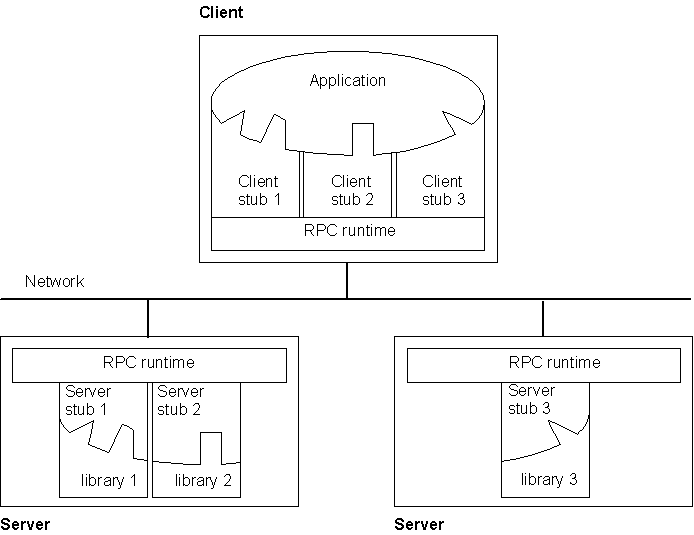
Much of the original design work for an RPC facility was started by Sun Microsystems®. This work was continued by the Open Software Foundation (OSF) as part of their overall Data Communications Exchange (DCE) standard. The Microsoft RPC facility is compatible with the OSF/DCE-standard RPC. It is important to note that it is compatible and not compliant. Compliance in this case means starting with the OSF source code and building on it. The Microsoft RPC facility is completely interoperable with other DCE-based RPC systems such as the ones for HP® and IBM AIX® systems.
The RPC mechanism is unique because it uses the other IPC mechanisms to establish communications between the client and the server. RPC can use named pipes, NetBIOS, or Windows Sockets to communicate with remote systems. If the client and server are on the same computer, it can use the Local Procedure Call (LPC) facility to transfer information between processes and subsystems. This makes RPC the most flexible and portable of the Windows NT IPC mechanisms.
RPC is based on the concepts used for creating structured programs, which can be viewed as having a "backbone" to which a series of "ribs" can be attached. The backbone is the mainstream logic of the program, which should rarely change. The ribs are the procedures the backbone calls on to do work or perform functions.
In traditional programs, these ribs are statically linked. By using DLLs, structured programs can dynamically link the ribs. With DLLs, the procedure code and the backbone code are in different modules. The DLL can thus be modified or updated without changes to the backbone. RPC means that the backbone and the ribs can exist on different computers, as shown in Figure 1.12.

Figure 1.12 Remote Procedure Call Facility
In this figure, the client application was developed with a specially compiled stub library. The client application thinks it is calling its own subroutines. In reality, these stubs transfer the data and the function down to a module called the RPC Runtime. This module is responsible for finding the server that can satisfy the RPC command. Once found, the function and data are sent to the server, where it is picked up by the RPC Runtime module on the server. The server piece then loads the needed library for the function, builds the appropriate data structure, and calls the function. The function thinks it is being called by the client application. When the function is completed, any return values are collected, formatted, and sent back to the client via the RPC Runtime modules. When the function returns to the client application it has the appropriate returned data, or it has an indication that the function failed in stream.